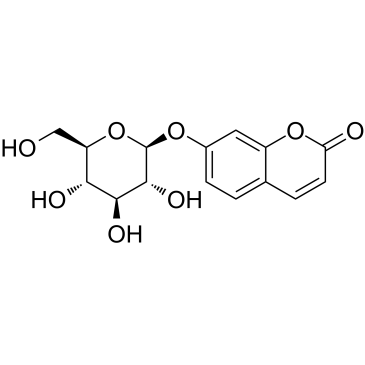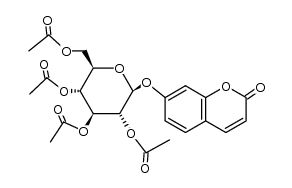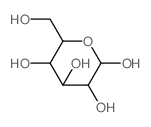93-39-0
| Name | 7-hydroxycoumarin glucoside |
|---|---|
| Synonyms |
2H-1-Benzopyran-2-one, 7- (β-D-glucopyranosyloxy)-
7-(Glucosyloxy)coumarin Skimmin 7-Hydroxycoumarin-7-glucoside Skimmine UMBELLIFERONE GLUCOSIDE 2H-1-Benzopyran-2-one, 7-(β-D-glucopyranosyloxy)- Coumarin, 7-(β-D-glucopyranosyloxy)- 2-Oxo-2H-chromen-7-yl β-D-glucopyranoside HYDROXYCOUMARIN-GLUCOSIDE,7 Skimmin (8CI) 7-(b-D-Glucopyranosyloxy)-2H-1-benzopyran-2-one |
| Description | Skimmin (Umbelliferone glucoside) is a coumarin found in Hydrangea paniculata, inhibits immune complex deposition, with anti-inflammatory activity[1]. |
|---|---|
| Related Catalog | |
| References |
| Density | 1.6±0.1 g/cm3 |
|---|---|
| Boiling Point | 632.0±55.0 °C at 760 mmHg |
| Melting Point | 221-222ºC |
| Molecular Formula | C15H16O8 |
| Molecular Weight | 324.28 |
| Flash Point | 239.3±25.0 °C |
| Exact Mass | 324.084503 |
| PSA | 129.59000 |
| LogP | -1.50 |
| Vapour Pressure | 0.0±1.9 mmHg at 25°C |
| Index of Refraction | 1.661 |
| Hazard Codes | Xi |
|---|---|
| RIDADR | NONH for all modes of transport |
|
~87% 
93-39-0 |
| Literature: Bjerre, Jeannette; Nielsen, Erik Holm; Bols, Mikael European Journal of Organic Chemistry, 2008 , # 4 p. 745 - 752 |
|
~% 
93-39-0 |
| Literature: Phytochemistry (Elsevier), , vol. 28, # 8 p. 2071 - 2078 |
| Precursor 3 | |
|---|---|
| DownStream 2 | |




